-
CATEGORY ::
- All Seeds /
- All Flower Seeds /
- All Hollyhock Seeds


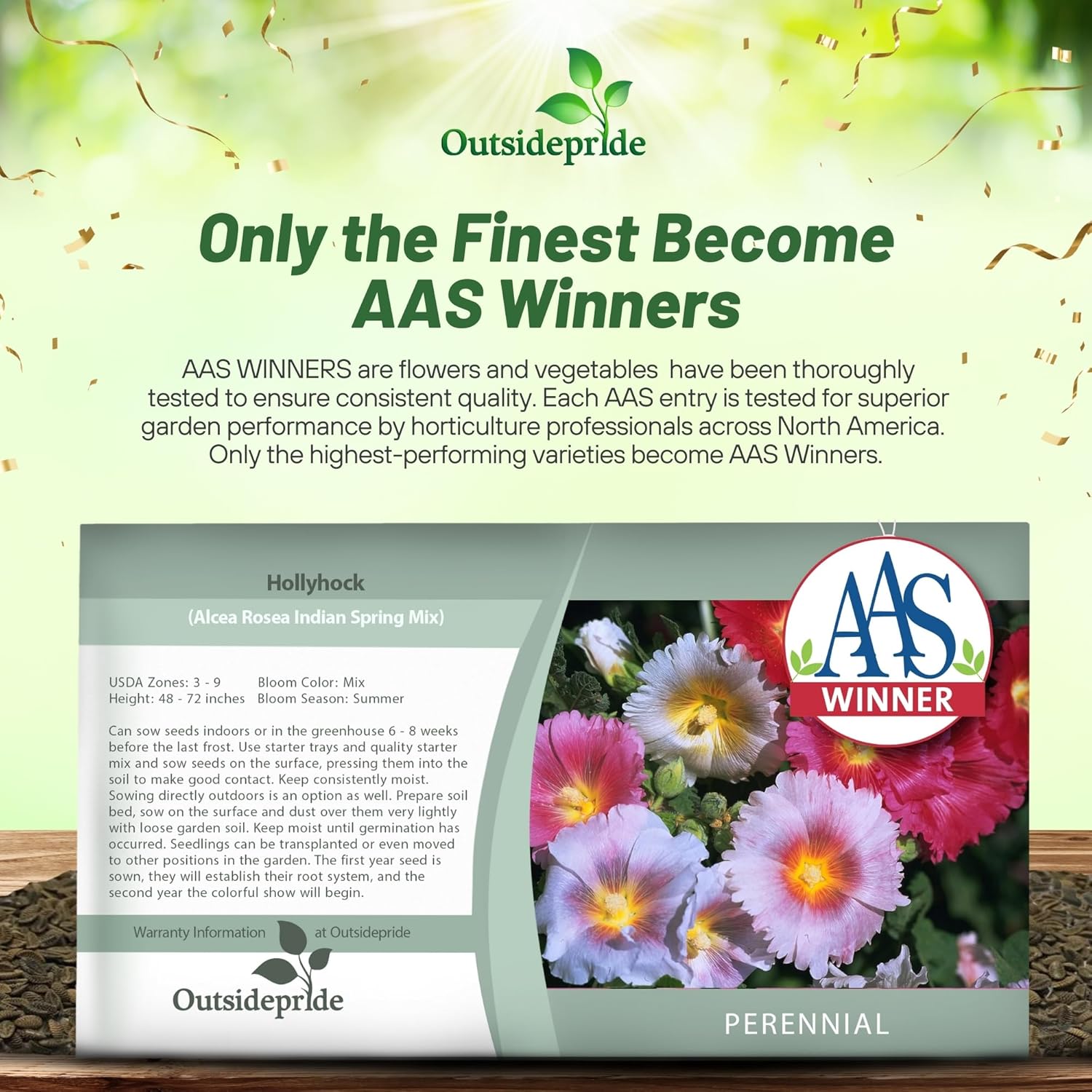
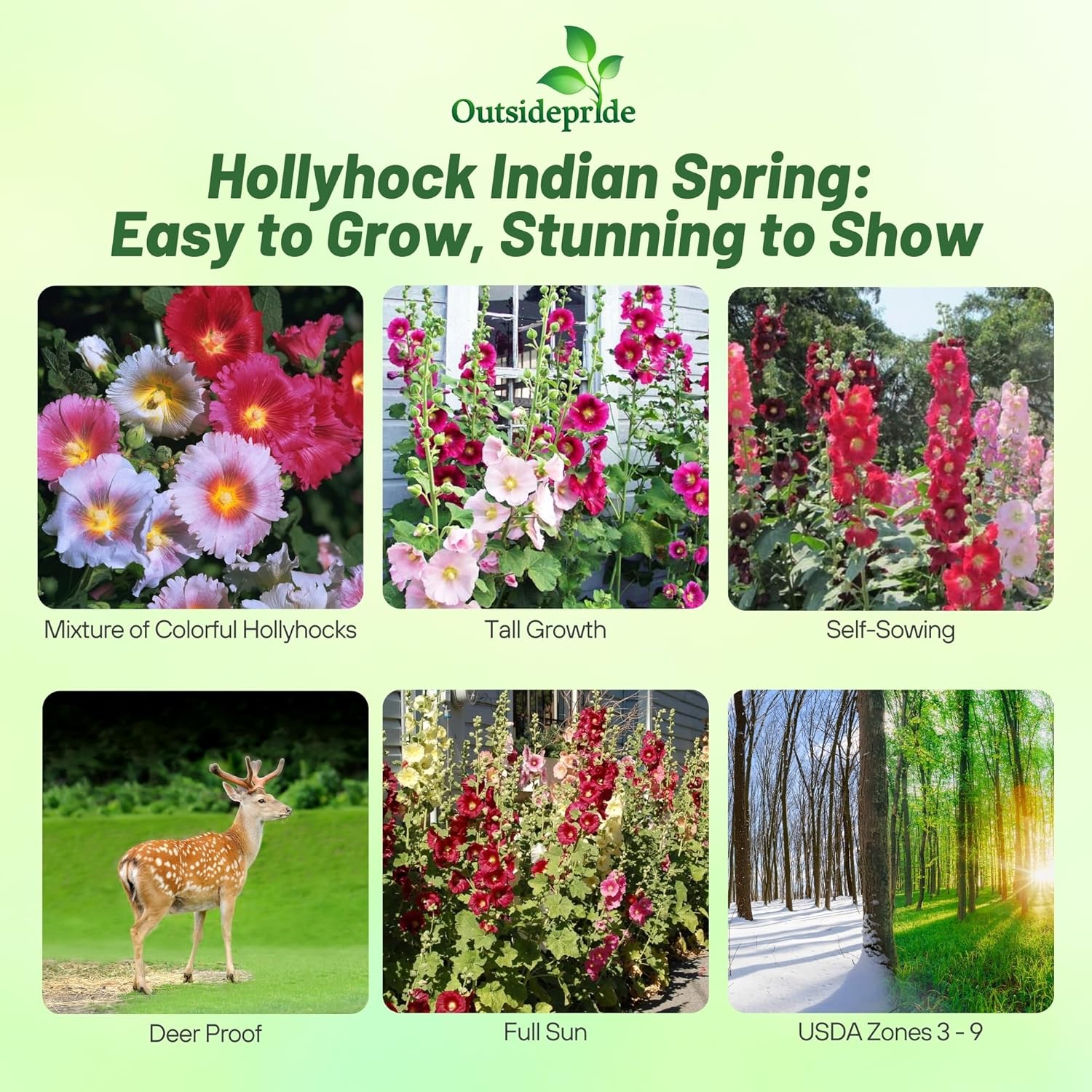
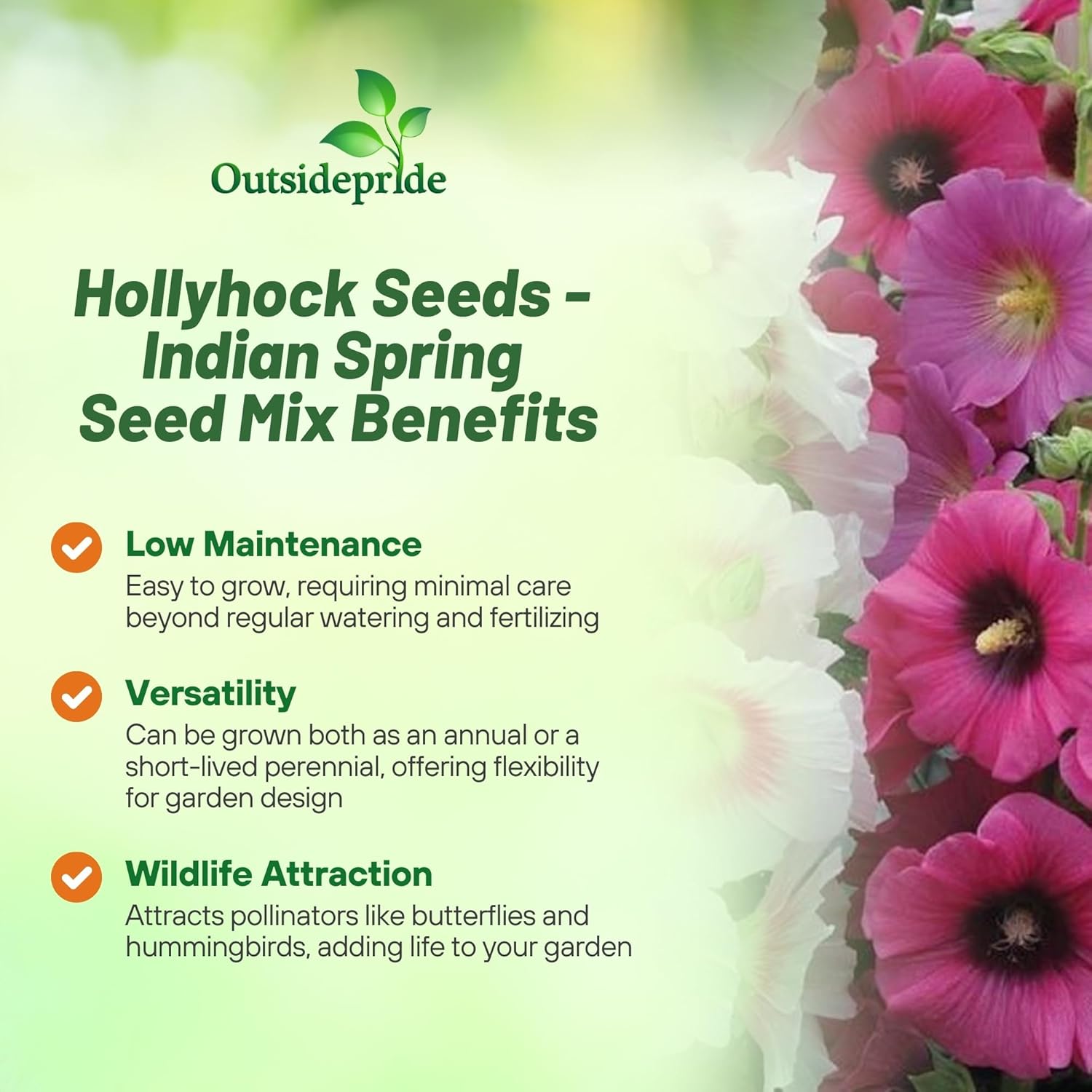
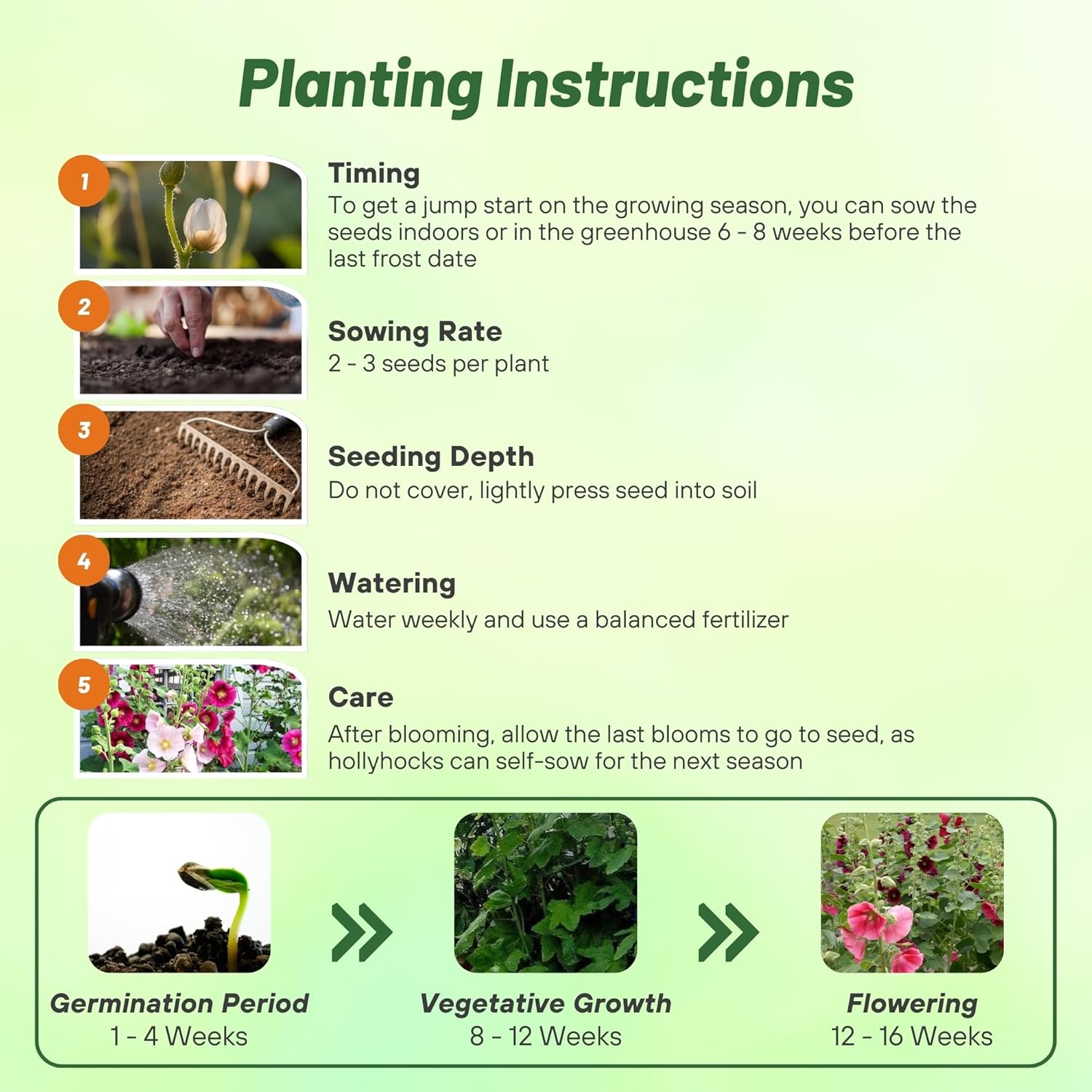
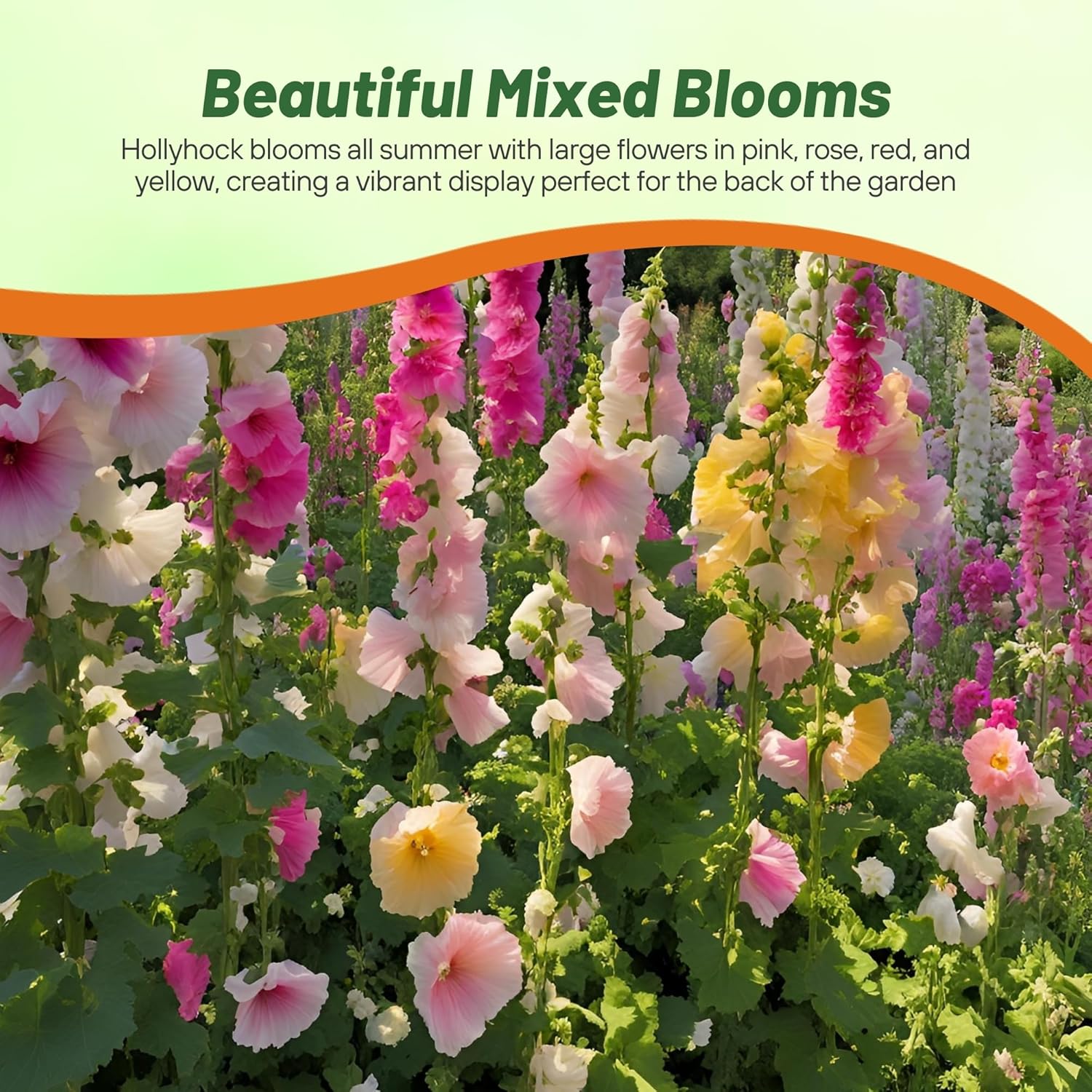
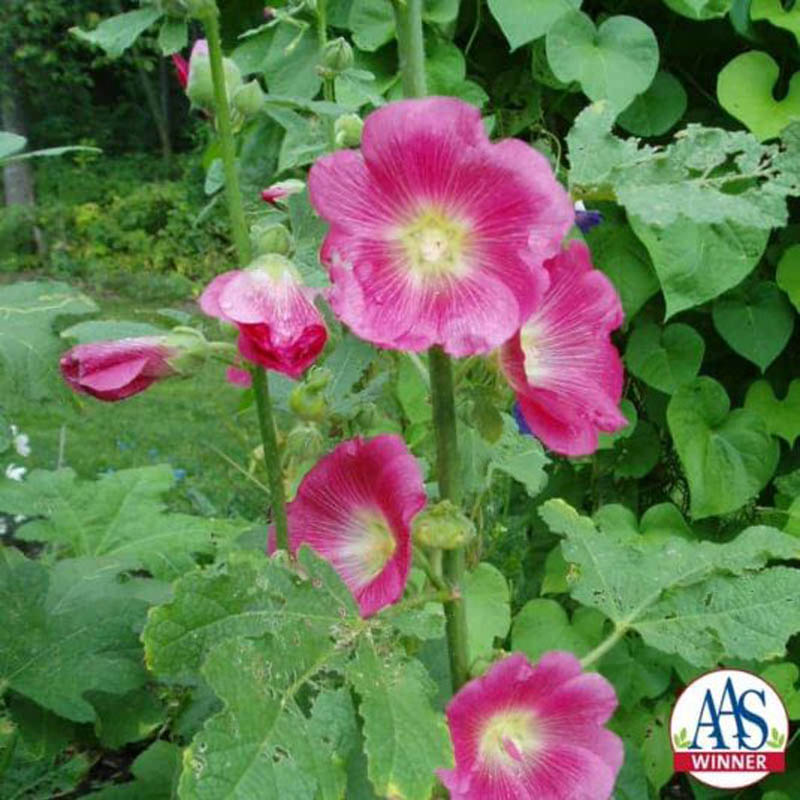



Hollyhock Seeds - Indian Spring
SEASON
Annual
USDA ZONES
3 - 9
HEIGHT
48 - 72 inches
BLOOM SEASON
Summer
BLOOM COLOR
Mix
ENVIRONMENT
Full sun
SOIL TYPE
Well drained, pH 6.1 - 7.8
DEER RESISTANT
Yes
HOUSE PLANT
No
AAS WINNER
1939
SEASON
Perennial
USDA ZONES
3 - 9
HEIGHT
72 inches
BLOOM SEASON
Early to late summer
BLOOM COLOR
Mix
ENVIRONMENT
Full sun
SOIL TYPE
Well drained, pH 6.1 - 7.8
DEER RESISTANT
Yes
SEASON
Perennial
USDA ZONES
4 - 9
HEIGHT
60 - 84 inches
BLOOM SEASON
Early to mid summer
BLOOM COLOR
Pink
ENVIRONMENT
Full sun
SOIL TYPE
Well drained, pH 6.1 - 7.8
DEER RESISTANT
Yes
SEASON
Perennial
USDA ZONES
4 - 9
HEIGHT
60 - 84 inches
BLOOM SEASON
Early to mid Summer
BLOOM COLOR
Yellow
ENVIRONMENT
Full sun
SOIL TYPE
Well drained, pH 6.1 - 7.8
DEER RESISTANT
Yes
SEASON
Perennial
USDA ZONES
4 - 8
HEIGHT
60 inches
BLOOM SEASON
Summer
BLOOM COLOR
Purple
ENVIRONMENT
Full sun to partial shade
SOIL TYPE
Well-drained, pH 5.8 - 7.2
DEER RESISTANT
Yes
SEASON
Perennial
USDA ZONES
3 - 9
HEIGHT
72 inches
BLOOM SEASON
Early to late summer
BLOOM COLOR
Mix
ENVIRONMENT
Full sun
SOIL TYPE
Well drained, pH 6.1 - 7.8
DEER RESISTANT
Yes
SEASON
Perennial
USDA ZONES
3 - 9
HEIGHT
72 inches
BLOOM SEASON
Early to late summer
BLOOM COLOR
Red
ENVIRONMENT
Full sun
SOIL TYPE
Well drained, pH 6.1 - 7.8
DEER RESISTANT
Yes
SEASON
Perennial
USDA ZONES
3 - 9
HEIGHT
72 inches
BLOOM SEASON
Early to late summer
BLOOM COLOR
Pink
ENVIRONMENT
Full sun
SOIL TYPE
Well drained, pH 6.1 - 7.8
DEER RESISTANT
Yes
About...
(Alcea Rosea Indian Spring Mix) - Hollyhocks have been grown in the garden for hundreds of years from flower seed. Their tall spikes of lovely crepe-textured flowers make a fine display in summer. This flower seed mix has big, impressive 4-inch double or semi-double blooms in 4 shades.
MORE HOLLYHOCK OPTIONS
Planting Directions
TEMPERATURE
60 - 65F
AVERAGE GERM TIME
21 - 28 days
LIGHT REQUIRED
Yes
DEPTH
Do not cover the seed but press into the soil
SOWING RATE
2 - 3 seeds per plant
MOISTURE
Keep seed moist until germination
PLANT SPACING
24 inches
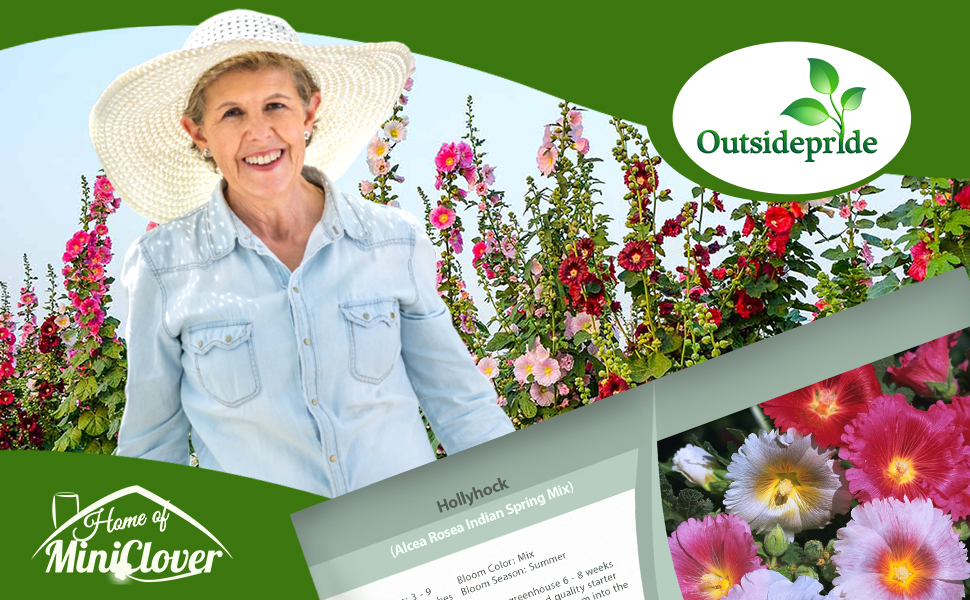
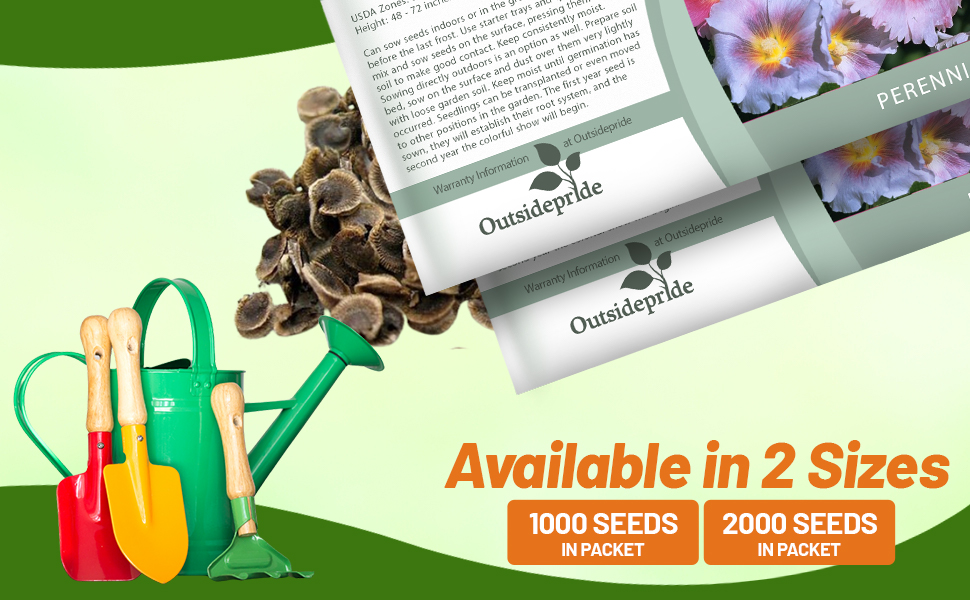
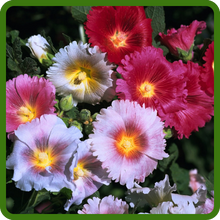
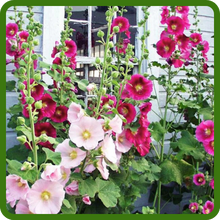
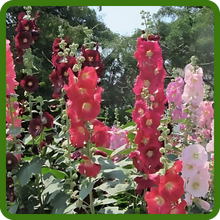


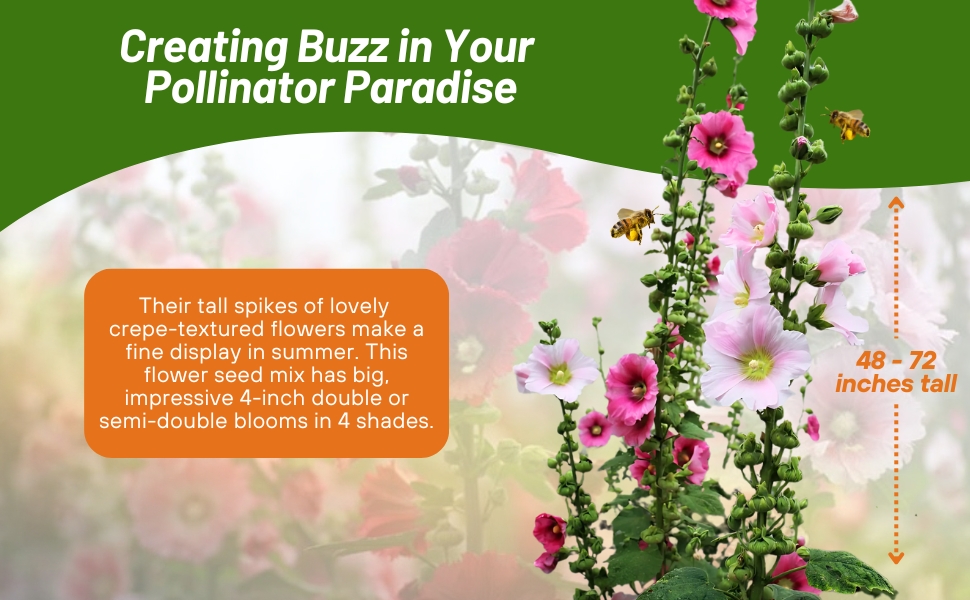
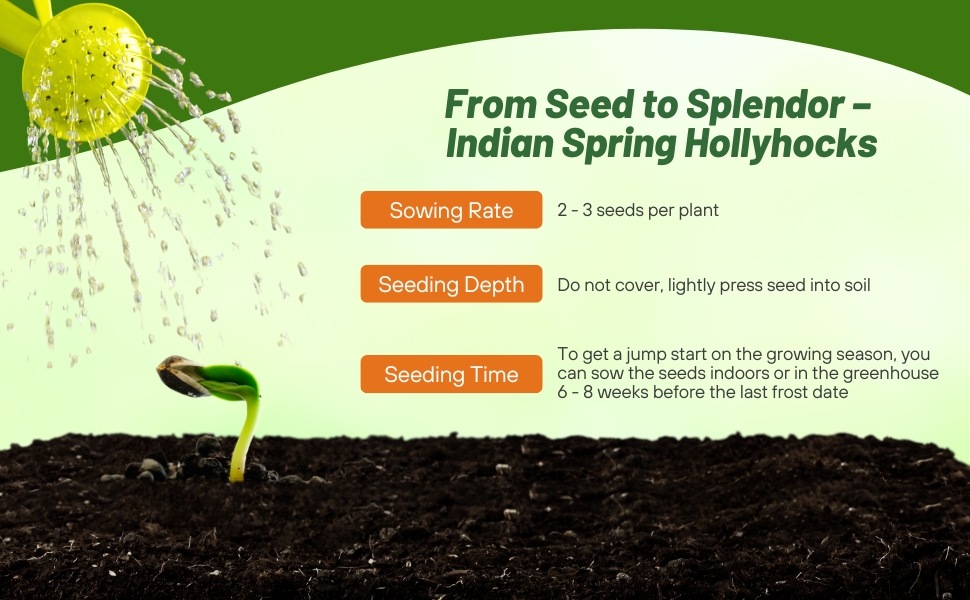
Hollyhock (Alcea Rosea Indian Spring Mix) - Hollyhocks have been grown in the garden for hundreds of years from flower seed. Their tall spikes of lovely crepe-textured flowers making a fine display in summer. This Indian Spring mix has big, impressive 4-inch double or semi-double blooms in 4 shades beginning low on the stalk, for even more color on every hollyhock plant. The flowers arise all along tall, sturdy stalks beginning just 4 months from sowing! This annual hollyhock is a long-blooming, very colorful series so garden-worthy that it has received awards. 1939 AAS Flower Winner.
Common Questions
Are hollyhocks hard to grow?
Hollyhocks are low-maintenance and easy to grow. They just need fertile soil, plenty of sun, and appropriate spacing and moisture levels to prevent problems with the fungal disease rust.
My hollyhock plants have a sickly appearance, what should I do?
If your hollyhocks appear stunted and feeble, they may be affected by the Puccinia malvacearum rust disease. This disease manifests as yellow or orange spots on the leaves, which later develop into lumps, causing the foliage to wither and fall off. Promptly eliminate the infected plants and dispose of them securely in a sealed bag.
My hollyhock’s leaves are curling, what is wrong?
Curling hollyhock leaves could indicate that the plant is under heat stress due to intense sunlight. To remedy this, consider relocating the plants to a shadier spot or installing a shade cloth for protection. Additionally, adding mulch to the soil can help maintain cooler roots for the plant.
Do I need to deadhead my hollyhock flowers?
Yes, to prolong your bloom season you will need to deadhead spent flowers. Also keeping your plants consistently moist will help encourage a good bloom season.
What are some good companion plants for alcea?
Plants such as salvia, echinacea and shasta daisy all work well with the alcea hollyhock plants.
Planting Directions
TEMPERATURE
60 - 65F
AVERAGE GERM TIME
10 - 14 days
LIGHT REQUIRED
Yes
DEPTH
Do not cover the seed but press into the soil
SOWING RATE
2 - 3 seeds per plant
MOISTURE
Keep seeds moist until germination
PLANT SPACING
24 inches
Hollyhock (Alcea Rosea Berry Cheesecake) - Hollyhock is an old time favorite for many gardeners. Berry Cheesecake is a formula blend of maroon, clear white, and soft creamy-yellow double flowers. It will bloom from early to midsummer reaching a height of 6 feet tall and 1 to 2 feet wide and grows best in full sun.
Hollyhock plants have soaring flowers which add a dynamic display to the back of your beds and borders. Hollyhock plants are happy in full sun and flower in the first year. They are hardy perennials, so will return year after year and provide perfect cut flowers for that special bouquet. Hollyhocks are edible and can be made into syrup or crystallised for cake decoration, and are perfect for pollinators too.































